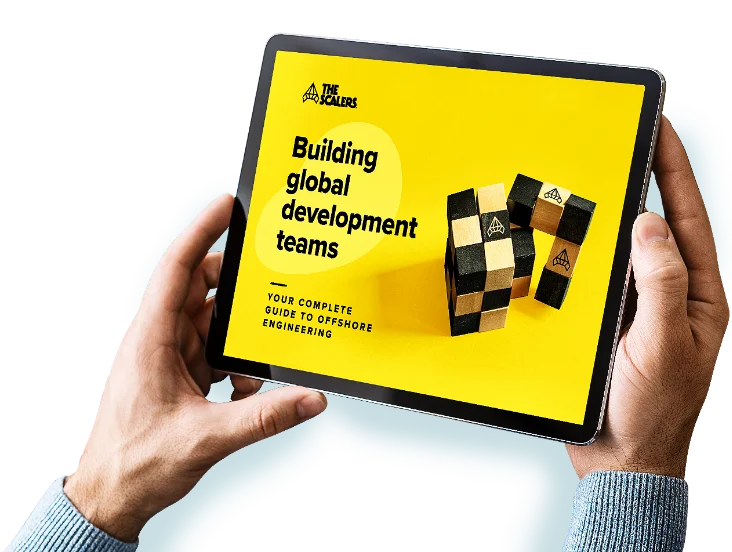India’s G20 presidency shows why it is the ideal hub for tech teams

This article was previously published for the Forbes Tech Council and was written by our CEO, Emilien Coquard.
After the G20 arrived in India for the first time for its historic first presidency, I’m sure they’ll have had a similar experience to my first trip to India.
I arrived with plenty of baggage. But it wasn’t just the usual clothing, computer and so on. I also had a low view of the tech ecosystem. Although I saw examples of those negative perceptions, I left with my mind changed.
The number and quality of engineers working hard to deliver innovative solutions blew me away. I see the same thing happen every time one of our partners comes to meet their offshore team for the first time.
Even if you don’t have the chance to see India’s tech prowess for yourself, in this article, I’ll give you a little glimpse into that rise and how they leverage that power as G20 president.
India’s incredible growth
Last year, India posted a 7.2% increase in GDP. An even more impressive achievement considering India is currently the fifth-largest economy in the world and on track to become the third largest by 2027.
This growth has been driven by the manufacturing and IT services sectors, aided by ongoing government investments in STEM education. And it doesn’t hurt that it’s now the world’s most populous country.
In 2019, the services sector accounted for 55% of India’s GDP. And with the IT sector growing 15% in FY22, that’s sure to be higher now.
This was on full display during the G20 summit and preliminary meetings. India used its economic and trading influence alongside its alliance across international divisions to form agreements.
Several of those agreements shine more light on India’s specific tech prowess.

in Bangalore
Speed up your software delivery with an integrated and dedicated team
LEARN MOREIndia ahead of schedule in tackling climate change
India is the third largest producer of renewable energy in the world. Impressively, India achieved its COP 21-Paris Summit challenge of reaching 40% of total energy consumption from renewables nine years early.
So they set an even more ambitious goal.
Now, India is targeting 50% of its total capacity from renewables. This achievement is even more impressive considering India is the third largest consumer of energy in the world and its population and economy are still rapidly growing.
Thankfully, with almost €1 trillion invested in India and France’s International Solar Alliance, India is helping increase solar energy not just at home but abroad too.
India’s example shows that ambitious sustainability goals are possible. And if you are looking to boost your own renewable credentials, India investments make it a prime location to invest in.
India leads the charge in fintech with unified payments interface
India’s Unified Payment Interface (UPI) was on full display at the G20 summit. Each guest received 1000 e-rupees in their own UPI wallets, allowing them to experience the service firsthand.
The digital payment platform is already well known.
In August 2023, India’s Unified Payment Interface (UPI) had a massive 10 billion transactions a month from both merchant-client and peer-to-peer transactions. And over 24 countries, including Singapore, Qatar, and France, have signed agreements to facilitate transactions across borders.
UPI’s may even become an alternative to SWIFT and is a prime example of India leading the way in fintech innovation.
Although the National Payments Corporation of India developed it, the software has been open-sourced, opening the door for wider adoption.
India’s UPI success offers a valuable blueprint for your digital transformation projects. By forging strategic partnerships, delivering user-friendly design and ensuring robust cybersecurity, companies can create transformative digital platforms with global reach.
Even in industries resistant to change.

How to beat local skill shortages and set up your development centre abroad
DOWNLOAD GUIDEGoing where no man (or drone) has gone before
Just over a week before the delegates arrived in New Delhi, Chandrayaan-3’s lander and rover—Vikram and Pragyaan—landed on the south pool of the moon. This was the first time any country had landed a probe on the south pole. More impressively, it was also from a space agency operating on a budget that’s a fraction of its international rivals.
The secret to the mission’s success? The incredible knowledge and expertise India has due to its huge investment in STEM programs.
This has created an immense talent pool of world-class engineering expertise nationwide. On its own, Bangalore, the headquarters of the Indian Space Research Organisation (ISRO), is home to over 1.5 million software engineers, 90,000 engineering graduates each year, and 400 R&D centers. And it doesn’t harm that the Hindustan Aeronautics Limited (HAL) headquarters are in the city too.
With all that knowledge, it is no wonder India could achieve this extraordinary achievement.
If you’ve been struggling to find skilled engineers and programmers for your company, setting up an offshore team in India could be the answer.
Challenges and opportunities ahead
India’s first presidency of the G20 has highlighted how it is a global leader in politics, technology, and now finance. As the world continues to tackle the aftermath of the Covid-19 lockdowns as well as the ongoing climate crisis, India is leading the way with tech and manufacturing innovation.
Next year the presidency will pass to Brazil, but thanks to its tech leadership, India will still be at the center stage.














